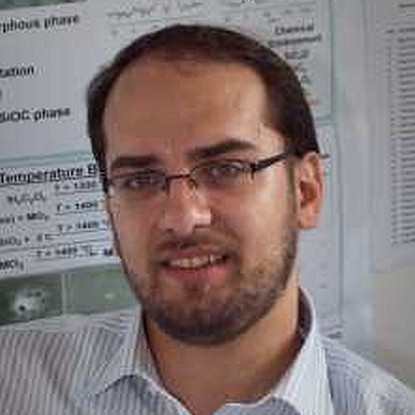Das Transformationsverfahren von Polymer zu Keramik ermöglichte bedeutende technologische Durchbrüche in der Keramikwissenschaft und -technologie, wie z. B. die Entwicklung von Keramikfasern, Beschichtungen oder Keramiken, die bei ultrahohen Temperaturen (bis zu 2000 °C) hinsichtlich Zersetzung, Kristallisation, Phasentrennung und Kriechverhalten thermisch stabil sind.
In den letzten Jahren wurden mehrere wichtige Fortschritte erzielt, beispielsweise die Entdeckung einer Vielzahl von funktionellen Eigenschaften, die mit PDCs verbunden sind. Darüber hinaus haben neue Einblicke in ihre Struktur im Nanobereich zum grundlegenden Verständnis der verschiedenen nützlichen und einzigartigen Merkmale von PDCs beigetragen, die mit ihrer hohen chemischen Beständigkeit oder hohen Kriechbeständigkeit oder ihrem Halbleiterverhalten zusammenhängen.
Unter dem Gesichtspunkt der Verarbeitung wurden präkeramische Polymere als reaktive Bindemittel zur Herstellung technischer Keramiken verwendet. Sie wurden manipuliert, um die Bildung geordneter Poren im Mesobereich zu ermöglichen. Sie wurden auf die Anwendung als neuentwickelter Keramikkomponenten hin getestet und wurden zu Bulk- oder makroporösen Komponenten verarbeitet.
Infolgedessen wurden mögliche Anwendungsbereiche von PDCs durch die jüngsten Forschungs- und Entwicklungsaktivitäten erheblich erweitert.
Einige wichtige technische Bereiche, die für die Anwendung von PDCs geeignet sind, sind zum Beispiel hochtemperaturbeständige Materialien (Energiematerialien, Automobilindustrie, Luft- und Raumfahrt usw.), harte Materialien, Materialien für die chemische Verfahrenstechnik (Katalysatorträger, Lebensmittel- und Biotechnologie usw.) oder funktionelle Materialien in Elektrotechnik sowie in der Mikro- / Nanoelektronik.
Die wissenschaftliche und technologische Entwicklung von PDCs ist hochgradig interdisziplinär und an der Spitze der Mikro- und Nanowissenschaften und -technologien. Das Fachwissen wird von Chemikern, Physikern, Mineralogisten, Materialwissenschaftlern und Ingenieuren bereitgestellt.
Darüber hinaus haben mehrere spezialisierte Industrien bereits Komponenten auf der Basis von PDCs kommerzialisiert, und die Produktion und Verfügbarkeit der verwendeten polymeren Vorläufer hat in den letzten Jahren dramatisch zugenommen.
Anfänglich konzentrierte sich die Forschung an PDCs hauptsächlich auf die mechanische Anwendung von dichten Körpern und Fasern für bei hohen Temperaturen. Heutzutage gewinnen Nanopulver und poröse PDCs mit Porengrößen im Bereich zwischen mehreren Mikrometern und wenigen Nanometern für Anwendungen als Katalysatorenträger sowie für die Anwendung bei Flüssig- und (Heiß-)Gastrennverfahren zunehmend an Bedeutung.
Darüber hinaus ist die Umwandlung von Polymer zu Keramik eine geeignete Technologie, um ein breites Spektrum von Verbundwerkstoffen auf keramischer Basis mit angepassten chemischen, mechanischen und physikalischen Eigenschaften herzustellen.
PDCs können auch zu dünnen Filmen für optoelektronische Anwendungen und zu dicken Filmen verarbeitet werden, z. B. für die Verwendung als Hartbeschichtungen, Schutzschichten und anderer Beschichtungen.
Die große Flexibilität bei der Verarbeitung und Umformung der präkeramischen Polymere zu Keramikkomponenten dient dazu in mehreren Anwendungen eine wichtige Rolle zu spielen.
Um die ungewöhnliche Mikrostruktur und die physikalischen Eigenschaften von PDCs genauer zu untersuchen und zu erforschen, wird dies eine Herausforderung zukünftiger Studien auf diesem Gebiet sein. Und es erfordert einen starken interdisziplinären Ansatz in der Grundlagenforschung und -entwicklung auf dem Gebiet der Chemie, Physik sowie Materialwissenschaft und -technik .






















